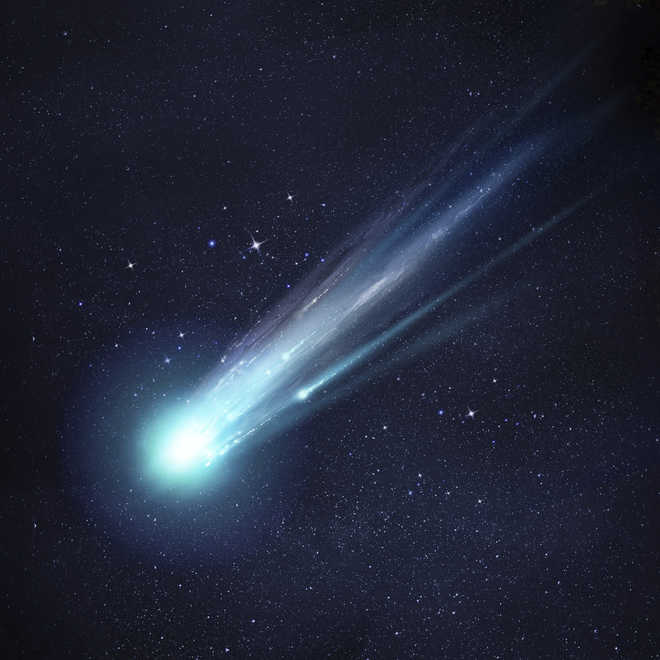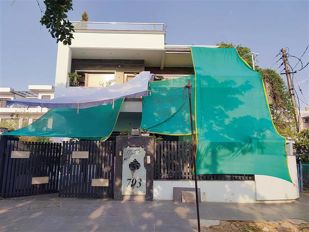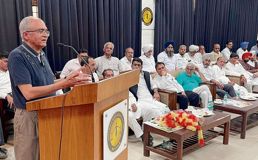
The images suggest that the roughly 4.5-billion-year-old comet, named 332P/Ikeya-Murakami (comet 332P), may be spinning so fast that material is ejected from its surface.
Los Angeles
Astronomers have captured the sharpest, most detailed observation of a comet breaking apart about 107 million km from the Earth, using NASA's Hubble Space Telescope.
In a series of images taken in January this year, the Hubble telescope showed 25 fragments consisting of a mixture of ice and dust that are drifting away from the comet at a pace equivalent to the walking speed of an adult, said David Jewitt from University of California, Los Angeles in the US, who led the research team.
The images suggest that the roughly 4.5-billion-year-old comet, named 332P/Ikeya-Murakami (comet 332P), may be spinning so fast that material is ejected from its surface.
The resulting debris is now scattered along a 4,828-km-long trail, researchers said.
These observations provide insight into the volatile behaviour of comets as they approach the sun and begin to vaporise, unleashing powerful forces.
The three-day observations show that the comet shards brighten and dim as icy patches on their surfaces rotate into and out of sunlight.
Their shapes change, too, as they break apart. The icy relics comprise about four percent of the parent comet and range in size from roughly 65 feet wide to 200 feet wide.
They orbit the sun at more than 80,000 km per hour.
The Hubble images show that the parent comet changes brightness frequently, completing a rotation every two to four hours. A visitor to the comet would see the Sun rise and set in as little as an hour, Jewitt said.
The comet is much smaller than astronomers thought, measuring only 1,600 feet across, about the length of five football fields.
Based on the Hubble data, the research team suggests that sunlight heated the surface of the comet, causing it to expel jets of dust and gas.
Since the nucleus is so small, these jets act like rocket engines, spinning up the comet's rotation, Jewitt said.
The faster spin rate loosened chunks of material, which are drifting off into space.
Jewitt suggested that some of the ejected pieces have themselves fallen to bits in a kind of cascading fragmentation.
The researchers estimate that comet 332P contains enough mass for 25 more outbursts.
"If the comet has an episode every six years, the equivalent of one orbit around the sun, then it will be gone in 150 years," Jewitt said. "It's just the blink of an eye, astronomically speaking. The trip to the inner solar system has doomed it."
The icy visitor hails from the Kuiper belt, a vast swarm of objects at the outskirts of our solar system.
As the comet travelled across the system, it was deflected by the planets, until Jupiter's gravity set its current orbit, Jewitt said.
The findings were published in the Astrophysical Journal Letters. — PTI



























